Argentina is the eighth-largest country in the world with 2.78 million square kilometres ranging from the frozen Antarctic to the arid northern town of La Quiaca without leaving aside the productive pampas. It is a territory rich in natural resources, a fact that has prompted permanent debate over land ownership since colonial times. The issue has now been revived with the repeal of Argentina’s ‘Ley de Tierras’ land law by President Javier Milei’s recent emergency decree.
By repealing this 2011 legislation approved during the government of Cristina Fernández de Kirchner, President Milei has opened the door to increased foreign ownership. The law capped foreign ownership at 15 percent at national, provincial and departmental levels with different provincial equivalencies.
While not forming part of this new list drawn up by Perfil, one iconic case of foreign ownership is British billionaire Joe Lewis, who in 1996 took a first step towards settling down in the south with the purchase of Patagonian land around Lago Escondido in El Foyel, Río Negro Province. But his 12,000 hectares are far removed from the 920,000 held by the Benetton Group in Argentina, or the million-plus leased by the Chinese firm High Luck. Lewis has built a luxurious country club with sports fields, gardens and a mansion in the midst of a paradise to which public access is restricted – it can only be reached on foot via an extremely tricky mountain path of 33 kilometres.
In the popular imagination, figures like CNN founder Ted Turner and the late Douglas Tompkins, founder of The North Face, both part of the exclusive list of foreign landowners. Turner was dazzled by the Argentine landscapes during a visit in the 1990s and decided to spend part of his fortune buying 4,451 hectares in Villa Traful, Neuquén, in 1996. "La Primavera" was his first ranch, to which he added over the years 9,712 hectares in Tierra del Fuego Province and 38,000 hectares in Collón Cullá, Neuquén Province. These lands are dedicated to conservation but also to tourist and fishing activities in the midst of paradise-esque landscapes.
Turner was a friend of Tompkins, who was recognised for his philanthropic activity and came to own 300,000 hectares across Argentina (110,000 productive, according to an interview granted to Gonzalo Sánchez, author of the book La Patagonia Vendida, los nuevos dueños de la tierra, Marea 2013). These lands were purchased and handed over to provincial and national parks via Tompkins’ NGO Conservation Land Trust. Argentina’s Monte León and Iberá national parks are formed in large part by such lands – when Tompkins died in 2015, all land still in his hands passed to the state. His legacy remains alive in the independent NGO Rewilding Argentina.
Another Patagonian landowner, although of Argentine nationality, was Lázaro Báez, the Kirchnerite construction tycoon convicted in court on corruption charges. According to public prosecutors, he came to own 415,000 hectares in Santa Cruz. This land was either auctioned off or is under the control of federal courts.
The Argentine businessmen today with the most hectares include Eduardo Elsztain (IRSA), José Luis Manzano (Integra Lithium) and Eduardo Eurnekián (Corporación América), among others.
Last year, Perfil decided to assemble a list of the country’s most important landowners possessing over 100,000 hectares. Methodologically it was decided to contemplate private land which has been leased, contacting experts, real estate agents, proprietors and CEOs.
Below is the definitive list of Argentina’s biggest landowners:
1) High Luck Group Argentina (1.148 million hectares)
High Luck Group Argentina is a private company financed by Chinese capital that is dedicated to the extraction of crude oil and natural gas. It has two leases in Salta: Chirete (50/50 with Pampa Energía) and the exploration blocks Morillo and Tartagal Oriental. It is a subsidiary of New Times Energy Corporation Limited, whose headquarters are in Hong Kong.
Chirete has an exploratory block of 897 square kilometres (or 89,700 hectares) while the firm has a majority stake in the Tartagal Oriental and Morillo concession stretching over 10,583 square kilometres (1,058,300 hectares), adding up to 1,148,000 hectares. These are controlled, although not owned, by the High Luck Group.
Pablo Cavallieri, the Operations Manager at the firm, told Perfil: "We have oil concessions throughout that surface but it is private land which has its proprietors. We do not own even half a hectare, it’s a concession as it is across the country," adding: "We have agreements with private individuals and go through the procedures permitting us to enter their properties and we do not use more than seven or eight hectares of that surface."
2) Grupo Benetton (920,000 hectares)
Italian billionaire businessman Luciano Benetton heads the foreign family owning the most land in the country via the Compañía de Tierras del Sud Argentino, possessing 920,000 hectares in the provinces of Chubut, Santa Cruz, Río Negro and Buenos Aires.
Of that total, according to the firm’s corporate profile, 356,000 hectares correspond to the estancias Leleque and Montoso (Chubut), Maitén (Chubut and Río Negro) and Pilcañeu (Río Negro), producing 390,000 kilos of wool annually from 100,000 Merino sheep as well as grazing 8,600 head of Hereford cattle. The group is completed by the estancias Coronel and Cóndor (Santa Cruz) and Santa Marta (Buenos Aires) where wheat, maize, soy, sunflower seed and potatoes are sown.
Consulted by Perfil, company CEO Agustín Dranovsky related: "The Benetton family started investing in Argentina in the early 1980s through to 1996,” from which point they increased their forestry production with 10,000 hectares of trees currently planted. They also made important investments into improving the genetics of sheep production, "thus raising the quality of the wool and the individual production," all with the final objective of favouring the yield for United Colours of Benetton, one of the most exclusive textiles in the world.
"Everybody working in this company, apart from its owners, is Argentine. The invoicing is made and the taxes paid in Argentina, of which 85 percent correspond to our exports or those of another company to whom we sell, thus triggering plenty of economic activity, which also suits the country," he said. While recognising that he runs the biggest company in the country in terms of territorial surface, "that does mean that it is the biggest agribusiness establishment because a hectare in Patagonia is not as productive as in Buenos Aires Province or the fertile pampas."
The company Dranovsky runs is not immune from the claims of indigenous communities with ancestral roots in that land. "We have fields near the Andes occupied, in Leleque and Maitén, with eviction sentences upheld but no advances," he recognised.
According to Dranovsky’s account, he has lodged over 65 criminal cases for land usurpation, cutting barbed wire, rustling and “the five attacks we had in 2017 when they set fire to some huts while two shepherds were subjected to a mock firing-squad."
3) Integra Lithium (573,000 hectares)
Integra Lithium is a company belonging to the conglomerate presided over by José Luis Manzano. Apart from his stake in energy companies and the media, the former interior minister of the Carlos Menem administration is involved in one of the resources concentrating the most economic interest in the world: lithium.
The company has three projects with 100 percent ownership over 573,000 hectares, of which 496,000 are the famous "salt flats" whereby lithium is obtained by evaporation. Of that total, 14,000 hectares are in the province of Jujuy, 149,000 in Catamarca and 333,000 in La Rioja.
According to the data available on the integrallithium.com website, there is also a project for extraction from hard rock in 77,000 hectares in Catamarca.
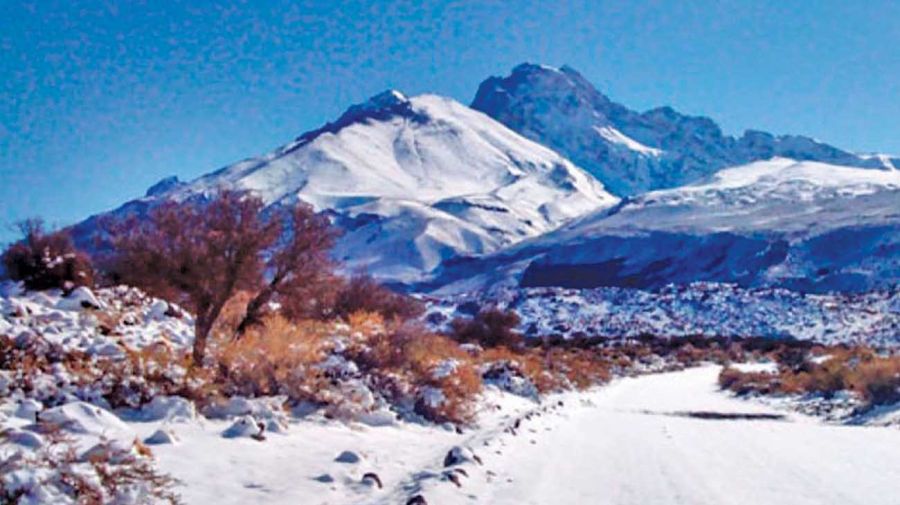
4) Cresud SA (538,822 hectares)
The firm presided over by Eduardo Elzstain has 538,822 hectares in 10 provinces: Santa Cruz (100,911 hectares), Salta (37,858 has), Chaco (26,370 has), Catamarca (12,395 has), La Pampa (9,615 has), San Luis (7,010 has), Entre Ríos (6,024 has), Córdoba (1,534 has), Santa Fe (1.431 has) and Mendoza (674 has).
The data is posted on the firm’s official website, which further reveals that it owns land in Brazil, Paraguay and Bolivia. Its land-holdings are dedicated to farming, including grain, sugar cane and meat. The conglomerate also consists of Inversiones y Representaciones Sociedad Anónima (IRSA), dedicated to real estate development and owners of the country’s main shopping centres.
Their latest purchase was announced only last July – the field “Los Sauces” of 1,250 hectares, located in La Pampa Province, for which the firm paid US$4.5 million.
No less important is one of the projects on which IRSA is currently focussed. Land disputes are not limited to inland provinces but also occur in the City of Buenos Aires. Under the name "Costa Urbana," IRSA is seeking to fill the terrain of the former Ciudad Deportiva de Boca south of Puerto Madero with high-rises and shops.
The case has gone to court. In March, 2023, the Federal Capital Appeals Court upheld the urban agreement between City Hall and IRSA, quashing the challenge of the civil society organisations opposing it. According to the official portfolio, the terrain has 70 hectares, of which 71 percent will be put to public use.
"Prime location, 56 macro-lots for construction and a building capacity of 895,000 square metres, 15-20 years of development" are some of the points promoted.
5) Estomonte AGSA (404,098 hectares)
The land of Estomonte AGSA – a huge Andean property in the Department of Calingasta, San Juan Province – is the object of court action in boundary dispute litigation.
It was purchased by a firm of Swiss origin in December, 1978, according to the writ to which Perfil had access. Some years back the boundaries of the terrain began to be disputed in court when the firm National Lead SA entered into bankruptcy and announced the auction of a field which, in the eyes of Estomonte, had overlapping boundaries at its expense. The basis of the conflict lies in the geographical difficulties which the mountainous terrain presents for surveyors.
Perfil had access to case file 51021194/2012, lodged at the Juzgado Federal de San Juan courtroom and currently up before the Supreme Court. The existence of demarcation problems becomes clear from analysis of an important pile of documents but according to a 2009 map, Estomonte holds a surface area measuring 404,098 hectares. There are other documents indicating a slightly different extent, like the 1978 writ giving 404,769 hectares, thus making the total relative.
The litigation of Estomonte AGSA is not only against National Lead SA but also the San Juan provincial government, which has joined this boundary dispute case affirming that the land does not belong to the Swiss firm. It is a huge holding with rivers, glaciers and major mountain peaks.
Perfil contacted sources linked to Estomonte, which, while steering clear of a concrete number of hectares, explained: "All along the Andes in San Juan there are proprietors in litigation with the provincial government or with other proprietors, in some cases with conflicts over ancient title deeds going back to before Argentina was formed. Estomonte’s dispute goes back a long way. It’s mostly mining land because the soil is not fertile."
6) Sominar SA (328,400 hectares)
Sociedad Minera SA (Sominar) is a firm financed by Argentine capital which owns a ranch full of landscapes ranging from Andean peaks, hills, volcanoes, lakes and caves to thermal springs. This mountain paradise is called Estancia El Sosneado with 328,400 hectares located in the Mendoza departments of San Rafael and San Carlos with its limits marked by the Diamante and Atuel rivers, what used to be National Highway 40 and the frontier with Chile. The firm has also donated terrain in its southern corner to build a village also called El Sosneado with 75 dwellings.
According to the information provided by the company, the totality of the property "is contracted out, mostly to the local population for breeding goats, sheep and cattle." There are also 120 active mines and quarries with "enormous availability of limestone (calcium carbonate) and lime plaster, black and red granite and slabs of different types, shapes and colours."
Within the private estancia there are two provincial natural reserves: Laguna del Atuel and Laguna del Diamante. In 2018 the company signed a touristic and environmental cooperation agreement for both natural reserves with the Mendoza provincial government within the domain of the private sector.
That agreement opened up a new dispute with the province of La Pampa, which rejected it within the framework of the historic conflict over the River Atuel and its hydric resources which are shared by both provinces. In La Pampa, they believed from the start that this was an attempt to privatise Laguna del Atuel, which is the source of the interprovincial river.
"The company’s intention is to look after and preserve the natural resources," expressed Sominar SA in a communiqué denying that interpretation.
The firm was also in the news last April with a legal case over the transfer of land by the national government to a Mapuche community. Before that a federal judge had accepted an injunction filed by Sominar SA to suspend a resolution of January 2023 establishing the transfer of 21,000 hectares – which the company said belonged to it – to the Lof El Sosneado Mapuche community.
7) Pluspetrol (320,000 hectares)
Pluspetrol was founded in 1977 by Luis Rey, one of the most famous businessmen from the sector who died in 2005, and today the company is a leading firm for oil, gas and lithium within Latin America. The first operations began in Neuquén and spread north over time. Today Pluspetrol is present in Peru, Argentina, Bolivia, Colombia, the United States, Uruguay, the Netherlands and Ecuador.
Since Rey’s death in 2005 most of the share package has been in the hands of Edith Rodríguez, a businesswoman of extremely low profile who is one of the richest persons in Argentina: number eight, according to the Forbes list of 2020.
In Argentina the company operates in Jujuy, Salta and Catamarca according to the latest report available on its firmapluspetrol.net website. Via Lítica Resources, it is operating new areas of 320,000 hectares dedicated to the production of lithium.
8) Grupo Pérez-Companc (293,000 hectares)
One of the best-known business surnames in the country. Luis Pérez Companc heads this business conglomerate, among which appears the firm Goyaike exploiting 293,000 hectares in Argentina, of which 270,000 are in Patagonia dedicated, as informed by the company, to breeding sheep and cattle. It also has 23,000 hectares of fertile pampa in southeastern Buenos Aires Province, General Villegas and Escobar.
The company owns Molinos Agro, which has silos stockpiling grain in the provinces of Salta, Chaco, Santiago del Estero, Santa Fe, Córdoba and Buenos Aires. One of this country’s great food producers with brands like Lucchetti, Matarazzo, La Salteña, Granja del Sol, Gallo and Cocinero, among others.
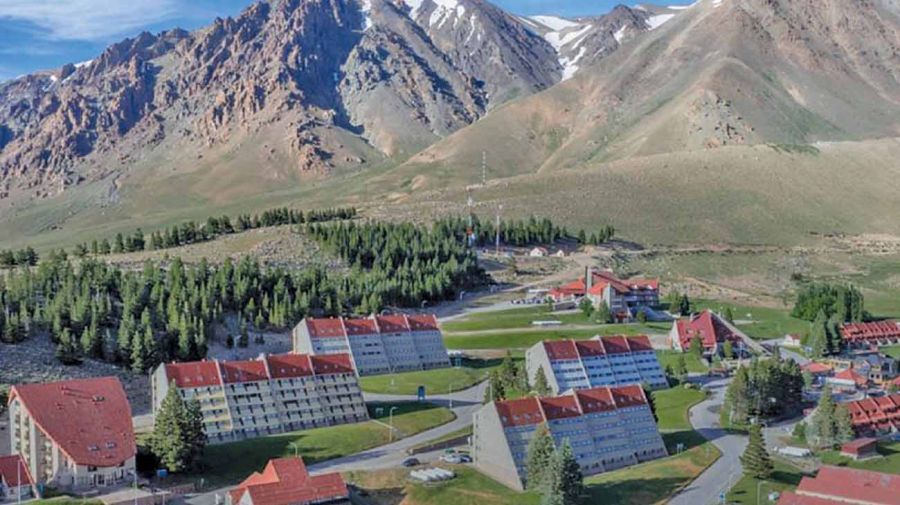
9) Arauco SA (264,334 hectares)
Dedicated to forestry, this firm is a subsidiary of the Chilean group Arauco and owner of 264,334 hectares distributed among the provinces of Misiones, Buenos Aires, Entre Ríos and Santa Fe, according to the information available in the firm’s official reports.
Born in Misiones in 1975 as Alto Paraná SA, it was purchased by Arauco Chile in 1996, thus taking over Argentina’s biggest pulp mill in Puerto Esperanza, Misiones. It has five business units: Forestry, Pulp, Wood, Panels and Energy, producing paper and derivatives, furniture and decoration.
Of the total hectares, 139,665 are destined for productive forestry use with pine, eucalyptus, monkey puzzle evergreens, willows and poplars while 119,481 are conserved as natural areas of virgin woods with a high conservation value.
“This is one of the few forestry companies in the world which maintains practically the same proportion between the productive surface destined to forestry and native woods dedicated to the conservation of our heritage,” reads a corporate document.
10) Grupo Los Grobo (260,000 hectares)
One of Argentina’s most important agricultural pools concentrating 260,000 hectares (leased, not owned) dedicated to farm production. Buenos Aires, La Pampa, Entre Ríos, Santa Fe and Córdoba are the provinces in which this group formed by the Grobocopatel brothers has a presence.
The firm, financed by Argentine capital, administers the fields according to "models of partnership and shared risk" with the proprietors.
"The Grobos possess no land of their own but rent and team up with landowners," Gustavo Grobocopatel, an agricultural engineer and founder of Los Grobo, told Perfil.
The history of the firm dates back to 1984 with the foundation of Los Grobo Agropecuaria, then limited to 3,500 hectares. They produce flour, ready-mixes and special mixes with a presence in the provinces of Buenos Aires, Entre Ríos, Santa Fe, Córdoba and La Pampa.
11) Adecoagro (217,810 hectares)
Another company with a dominant position in farm and food production is Adecoagro, financed by Luxembourg capital. According to a report of the Cushman & Wakefield law firm prepared for the company, last September they had 217,810 hectares, divided among the provinces of Buenos Aires, Corrientes, Formosa, Salta, Santa Fe and Santiago del Estero.
The fields are dedicated to sowing maize, wheat, peanuts, sunflower seed, soy and other crops, together with dairy produce under the brand Las Tres Niñas, as well as rice and snacks via de Molinos Ala and Apóstoles, all brands with a strong presence on any supermarket shelf.
The firm was founded in Argentina by its current CEO Mariano Bosch, a businessman dedicated to agricultural activities as from 2002 when Adecoagro made its début on 70,000 hectares dedicated to agricultural production and cattle-breeding. The company has been listed on the New York Stock Exchange since 2011.
12) Ledesma SAAI (212,429 hectares)
One of the most traditional companies in Argentina, founded 115 years ago and run since 1970 by Carlos Pedro Blaquier, the sugar tycoon who died last March without ever being tried for crimes against humanity during the 1976-1983 military dictatorship.
The courts proved that during the dictatorship the company lent its trucks for the military to abduct hundreds of workers, many of them Ledesma employees, in an episode known as ‘La Noche del Apagón’ (Blackout Night) in 1976.
The province of Jujuy is the cradle of this company and where it has the most hectares – 157,000 dedicated to the harvest of sugar cane for the manufacture of paper and its derivatives. According to the company’s sustainability report, there are a further 3,000 hectares of citric plantations in that province.
To that should be added 51,429 more hectares corresponding to the estancias La Biznaga, La Bellaca and Magdala in Buenos Aires Province, and Centella in the province of Entre Ríos, where a further 4,000 hectares are preserved as a nature reserve. In Salta and Tucumán there are 1,000 hectares destined to citrus production, of which 200 correspond to the El Rodeo estancia where lemons are grown. An important number of hectares has also been preserved with 76,000 hectares donated in 1975 to what currently constitutes the Parque Nacional Calilegua.
Today the Board of Directors consists of Carlos Herminio Blaquier (president), Alejandro, Santiago and Ignacio Blaquier and Juan Ignacio Pereyra Iraola.
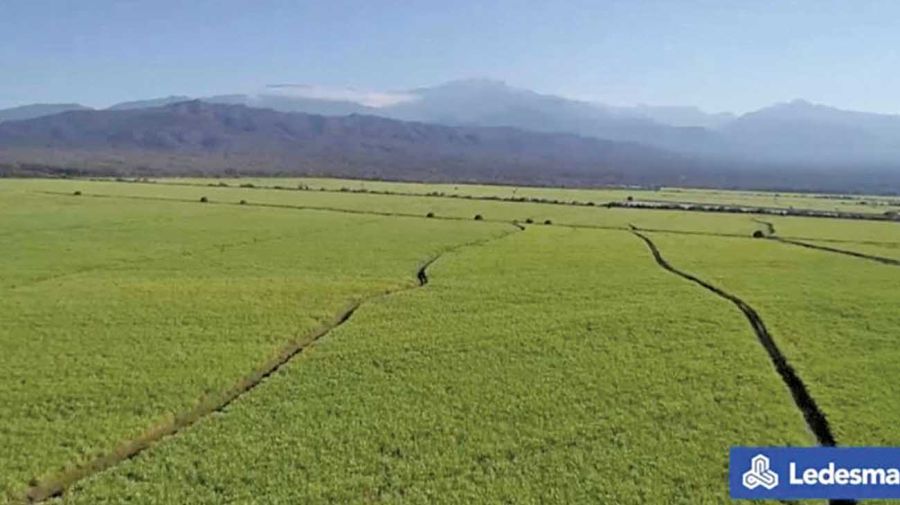
13) Grupo AGD (200,000 hectares)
The Urquías are one of the best-known families in Córdoba with their firm Aceitera General Deheza (AGD) leading the way in the production of vegetable oils.
Currently presided over by Roberto Urquía, AGD has an area of 200,000 hectares cultivated with grain and oilseeds in the provinces of Córdoba, Santa Fe and San Luis as well as land destined for storage in the provinces of Chaco, Santa Fe, Buenos Aires, Tucumán, Salta, Santiago del Estero and Entre Ríos.
The firm explained that the total combines their own and leased fields as well as partnerships with third parties. At the time of writing, there has been no response to being consulted by Perfil as to how many hectares they own.
The company was born in the early 1950s under Adrián Pascual Urquía and with the passage of time consolidated itself in the production of crude and refined oils and cereals. The raw material is also converted into food products such as mayonnaise, sauces and cooking oils with Natura, Cada Día and Mayoliva among AGD’s brands.
14) Lartirigoyen y CÍA (180,000 hectares)
One of Argentina’s main agribusiness companies is Lartirigoyen SA, which has its head office in La Pampa but also operates in the provinces of Buenos Aires, Entre Ríos, Santa Fe, Córdoba and Salta.
The firm indicated to Perfil that the number of hectares it cultivates tends to fluctuate between 150,000 and 180,000 but is currently closer to the latter figure, adding: "Lartirigoyen possesses no land of its own but produces in partnership with over 55 farmers of our country."
The company is dedicated to the production of cereals and cattle-breeding, possessing almost 22,500 head of cattle grazing between fields in La Pampa and southern Buenos Aires Province, as well as two pig farms, one in Dorila (La Pampa) and the other in Reconquista (Santa Fe).
The group has shares in other companies such as Molino Tassara, Patagonia Pet (a pet food factory), Chemotécnica (agrochemicals), Alea (exporting barley for beer); Lartirigoyen y Oromi (a stockyard) and Sitio 0 (the port of Quequén). Its president is Ignacio Lartirigoyen, a La Pampa businessman who belongs to the AEA (Asociación Empresaria Argentina) 'círculo rojo' establishment grouping of big businessmen.
15) Ochoa-Paz families (176,000 hectares)
Less than 100 kilometres from the city of Esquel, Chubut, the Estancia Tecka Lodge lies at the foothills of the Andes in a landscape formed by woods, rivers and two manor houses. The estate, the property of the Ochoa and Paz families, has 176,000 hectares.
The estancia receives fishermen from Argentina and all over the world seeking trout and other fish in the Corcovado and Tecka rivers. According to its letter of presentation, it "offers what no other ranch in Argentina can, 96 miles (or over 150 kilometres) of private waters."
16) Grupo MSU (172,195 hectares)
Manuel Santos de Uribelarrea heads Grupo MSU, whose MSU Energy has a capacity for generating 750 MW of electricity via three thermal power plants.
But its biggest land-holdings are in the framework of MSU Agro, one of the country’s main agribusinesses, dedicated to sowing its own fields as well as leasing out its knowhow to other proprietors so that the exact number of hectares varies according to the season.
According to the information provided by the firm, it currently controls fields in the provinces of Buenos Aires, Santa Fe, Córdoba, La Pampa, Entre Ríos, Santiago del Estero and Chaco. According to the company, they sow over 165,000 hectares, a number which can vary according to the system of leasing.
Yet according to the most recent consolidated financial report to which Perfil had access, corresponding to the last quarter of 2022, the sowing and reaping covered a total of 172,195 hectares. Most of those fields are leased, said the firm when consulted by this newspaper.
The company was started by Santos de Uribelarre (currently chairman of the Board of Directors) together with Santos de Uribelarrea Jr in 1997, yet the surname is one of the most traditional in the sector since the family first started a farm business in 1850. They are dedicated to the production of wheat, maize, soy, sunflower seeds, barley and peanuts.
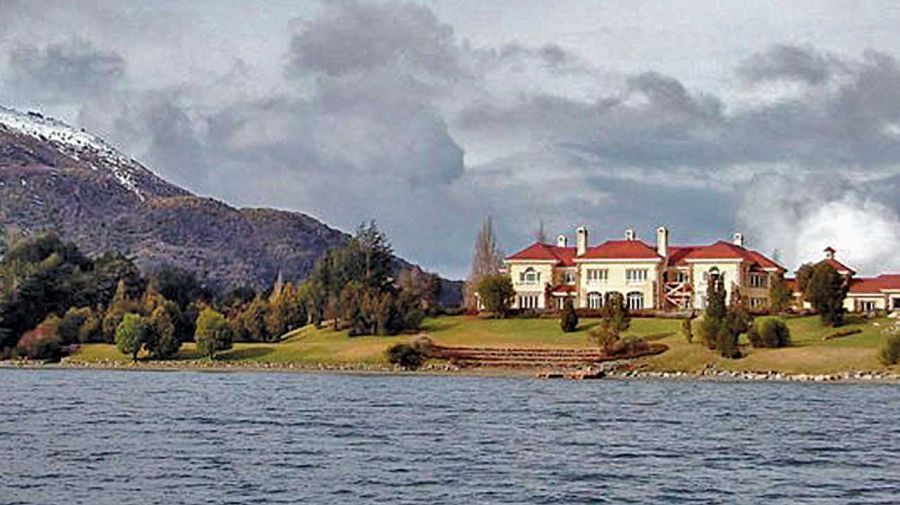
17) El Palauco (170,000 hectares)
El Palauco SA had a field of 170,000 hectares in the province of Mendoza but went broke in 2003. Despite that, this huge property continues in the name of the three ex-partners who headed its Board of Directors: Luis Demarchi (43.9 percent), Carlos Santalesa (43.9 percent) and Sergio Rostagno (12.2 percent), who still conserve it as an undivided condominium.
According to what Perfil could find out, the field belonged to the great-grandfather of Santalesa, who in turn had bought it from the state at an auction in 1912.
Rostagno is a lawyer and lives in San Isidro although he travels periodically to Malargüe. He seems resigned to the complications arising from such a vast expanse of land to the degree where he told Perfil that he would like to exchange his fields for 1,000 hectares in La Pampa, where, he recognised, "everything is more orderly."
Dozens of articles have been published in the Mendoza press carrying news of the evictions of families and communities squatting in his fields and claiming their ownership. According to Rostagno, this conflict started in 2004, when "some brand-new vans crisscrossed the fields trying to convince the tenants to pass themselves off as indigenous people and not pay any more rent. From that moment on many did just that, even though there was a rent contract on the table. We sued them and obtained a [favourable] sentence but it has been halted because it cannot be enforced against indigenous peoples," he complained to Perfil.
Within El Palauco there is a strategic international station of the European Space Agency where a decade ago a parabolic disc 35 metres in diameter was inaugurated, the third in the world (the others are in Australia and Spain). They are bases which operate for the transmission of data, exploratory missions and scientific experiments.
18) Nieves de Mendoza SA (145,460 hectares)
This company administers the Las Leñas ski centre, located in Malargüe, Mendoza, one of Argentina’s main tourist attractions.
The ski centre is the property of Valle de Las Leñas SA, behind which is the Walbrook Group, owned by the Malayan businessman Pakiri Arumugam, according to reports in Los Andes and other media. The Malayan business presence dates back to 2003 when they bought 97 percent of the shares in the hands of IRSA.
Perfil contacted the institutional channels of the firm in multiple ways but they refused to supply information when they answered at all.
A ruling by a San Rafael federal judge last April accepted a lawsuit by Nieves de Mendoza SA to suspend the effects of a resolution by the INAI Indigenous Affairs Department to recognise the occupation of a Mapuche community of private land, some of which form part of the firm’s hectares.
According to federal judge Eduardo Puigdéngolas, Nieves de Mendoza SA possesses a field called "El Álamo" near Malargüe with a surface "of 145,460 hectares approximately." In that ruling, the judge questioned INAI, whose resolution had recognised "the current, traditional and public occupation" of the Lof Limay Kurref Mapuche community.
In Mendoza they assure that the area in the hands of Nieves de Mendoza SA and Valle de Las Leñas SA is much bigger but neither the Malargüe town hall nor the Mendoza provincial government answered Perfil’s requests for information.
19) Grupo Duhau (130,000 hectares)
The company founded in the mid-19th century by Candelaria Fouillerac de Duhau and Urbano Duhau.
Grupo Duhau is dedicated to farm production and cattle-breeding in the provinces of Buenos Aires, Santa Fe, Santiago del Estero and Chaco. The group’s flagship is Administración Enrique Duhau, which operates over 130,000 hectares in this country.
This leading company in the farming sector produces grain, oilseeds and animal protein. In corporate videos its president Enrique Duhau along with other members of the family who manage the firm underline their interest in protecting the soil via the use of new technologies and artificial intelligence to place the focus on the use of agrochemicals.
20) Corporación América, (105,397 hectares)
Agroindustrial activities are one of the branches of the business holding presided over by billionaire Eduardo Eurnekian, where President Milei once worked.
They are channelled via Unitec Bio and the Bodega del Fin del Mundo vineyard in 105,397 hectares located in Chaco, Formosa and Neuquén with the vineyard in the latter.
The firm has two estancias in Chaco, according to the portfolio available on the web: La Supina (27,331 hectares) and Don Panos (16,922 hectares). These fields are in the General San Martín department in northeastern Chaco. Formosa has the biggest fields: Estancia El Bellaco with 46,144 hectares.









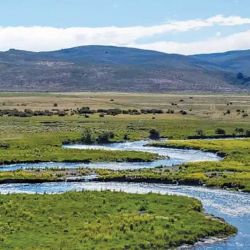


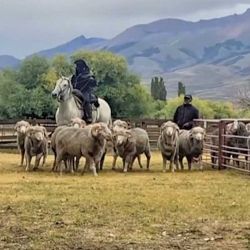


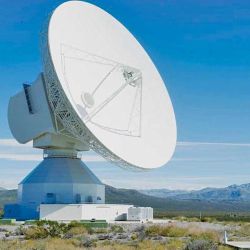









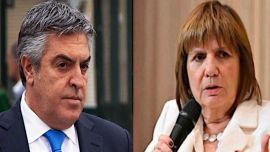
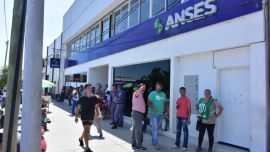


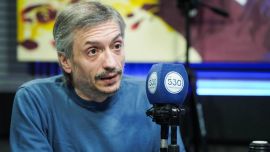
Comments